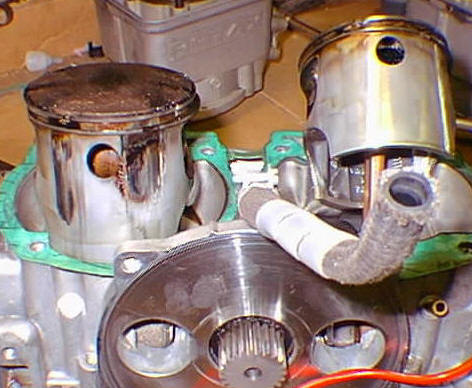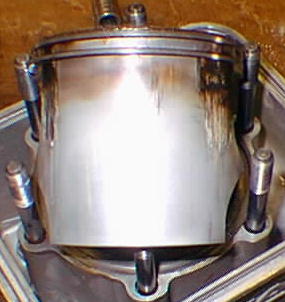Cold Seizures explained
The text below is reproduced from a posting to the BMAA eGroup, where a
member helpfully shared this information - which comes from a Rotax
expert.
First.. the term "cold seizure" is a bit of a misnomer. All
seizures are caused by heat/friction. A cold seizure is where the piston
expands faster than the bore it is traveling in and contacts the sides of
that bore. These are also known as four corner seizures.
The worst case scenario is that the engine can just lose power and stop.
In the case of a mild (mini) seizure the engine may just lose power for a
second or two, but will respond to throttle inputs and will recover when
the throttle is advanced. This may happen a few times before a major
seizure occurs.
Cold seizures "usually" occur after a full throttle run when the engine is
powered back to a cruise throttle setting. If the engine has experienced
some previous mini seizures, the stoppage can occur anytime in flight as
there is already some aluminum (off the piston) attached to the cylinder
wall and galling (unwanted removal of aluminum from the piston to the
cylinder wall) will be occurring at a variable rate.
In a cold seizure scenario the engine may just sputter and lose rpm for a
second or two, or it may bring the engine to a complete stop. Once the
engine has cooled down a bit it will appear to re-start and run properly.
Don't let this fool you. More than one person has tried to fly his plane
out of a field where they had to land because the engine quit, only to
have the engine fail again in short order.. unfortunately, the second
failure usually happens when the pilot has fewer options for a safe off
field landing.
Don't let "get home itis" bite you.
Find out why the engine stopped before you carry on.. After all,
the "self fixing engine" has not yet been invented.
The cause of the cold seizure can be variable.
One obvious one, would be
a lack of warm up prior to going to full throttle. Also, long extended
descents at low power settings followed by a high power run (go around)
can also contribute/cause the problem.
A major cold seizure (complete
stoppage of the engine) can occur as a result of multiple mini seizures
finally causing a big time stoppage of the engine.
An easy check for a four corner seizure (cold seizure) on an air
cooled engine is to remove the exhaust "Y" pipe (manifold) and
take a peek at the sides of the pistons.
If the engine has experienced a
seizure, the pistons will tell you the story.
On a Rotax 582 liquid cooled engine a cold seizure is not usually
visible through the exhaust port, and you can not see the piston on the
intake port side. You can see a seizure cause by lack of lubrication from
the exhaust port.
On a cold seizure, there will be vertical scuffing towards to outside
edges of the piston as viewed through the exhaust port.
There will be two
corresponding vertical scuffs on the intake side, but these cannot be
viewed without removing the cylinders.. If the engine has experienced a
cold seizure these marks will be visible through the exhaust ports.
If you have any thoughts that your engine might have experienced a mini
through a full seizure, its far cheaper to fix the engine problem than fix
both an engine and airframe problem because the engine failed again. The
"through the exhaust port" test is simple and definitive! |



